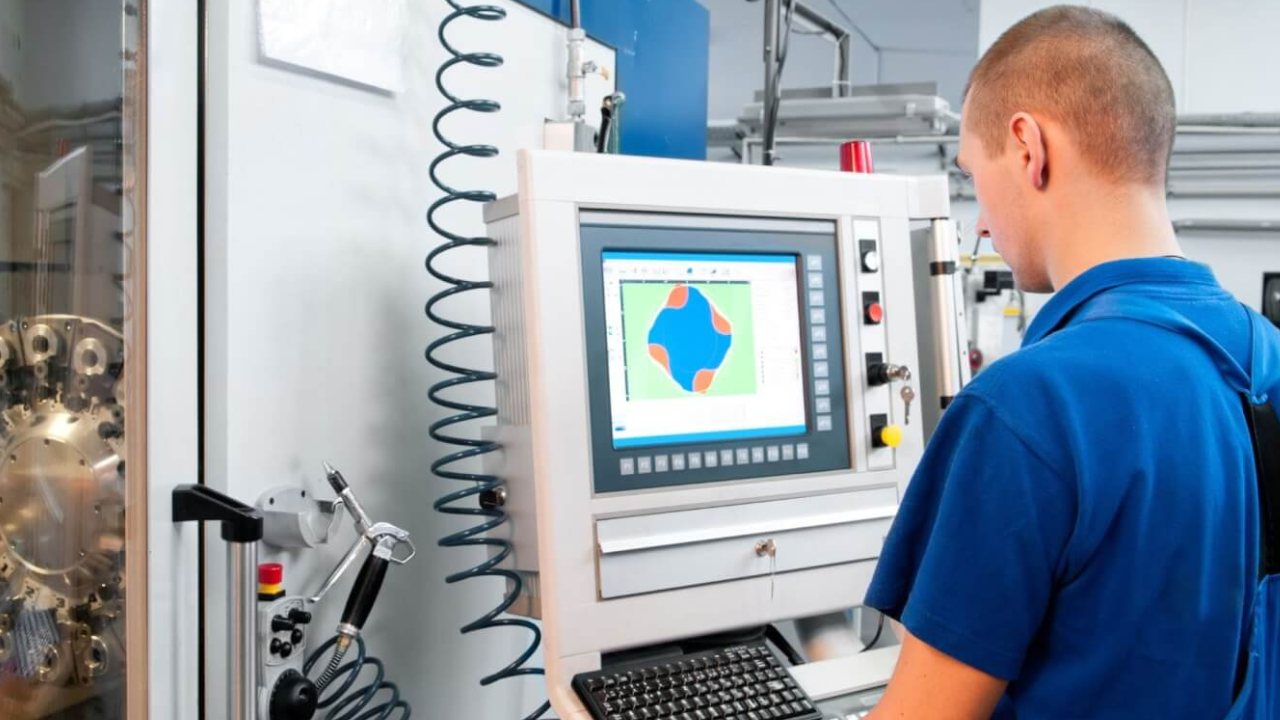Computer Numerical Control (CNC) machining is a cutting-edge manufacturing technique that has completely changed how complex and accurate components are made. This technique makes use of computer programs to operate 3D printers and machine tools, allowing for the manufacturing of intricate and precise parts.
This article will help you to know What is CNC machining? and how it works. CNC machining is the name given to a production process in which the movement of tools and machinery is controlled by computer software that has been preprogrammed. CNC machining automates every step of the process, improving accuracy and lowering the possibility of mistakes, in contrast to traditional manual machining, which depends on human operators to direct the tools.
Steps Are Taken During CNC Machining
CNC, or computer numerical control, machining, is a manufacturing technique in which machine tools are controlled and operated by computerized systems. There are multiple crucial steps in the process:
Design and Programming:
Using Computer-Aided Design (CAD) software, a digital design is created to start the process of creating a CNC-machined item. CAD is used by designers to model the geometry, features, and dimensions of a part. The next stage is to program Computer-Aided Manufacturing (CAM) after the design is finished. The CAD model is transformed by CAM software into G-code or a set of instructions that direct the CNC machine while it is being machined.
Material Selection:
An essential first step in CNC machining is selecting the appropriate material. The choice is based on the part’s endurance, functionality, and other particular needs. Common materials include composite materials, polymers, and metals like titanium, steel, and aluminum. The characteristics of the material affect process efficiency overall, tool selection, and machining parameters.
Choosing Tools:
A key component of CNC machining is tooling since the material and design criteria must be taken into consideration when choosing the cutting tools. For distinct machining tasks, a variety of tools are available, including end mills, drills, and reamers. Cutting speed, tool life, and surface finish are all impacted by the selection of the geometry, material, and coating for the tool.
Configuring a CNC Machine:
The CNC machine needs to be properly set up before any machining can start. This entails setting up the work coordinate system, loading the required tools, and securing the raw material (workpiece) in the machine. The work coordinate system guarantees precise tool positioning for the workpiece and establishes the machine’s reference point.
Machining Processes:
A range of processes, each with a distinct function in the production process, are included in CNC machining. These include:
To form features like slots, holes, and intricate curves, revolving cutting tools remove material from the workpiece during milling operations. In turning operations, the workpiece is rotated while a stationary cutting tool removes material to form cylindrical shapes, including bushings and shafts. Using specialized drill bits, the operation of drilling creates holes in the workpiece. By using abrasion to remove material, grinding operations can produce tight tolerances and fine surface finishes.
Quality Control and Inspection:
Strict quality control and inspection procedures are used in CNC machining to guarantee that the finished product satisfies design parameters. To check measurements, tolerances, and surface finishes, utilize Coordinate Measuring Machines (CMMs) and additional inspection instruments. Maintaining the high level of precision associated with CNC machining depends on this step.
Post-Processing:
Following the completion of the machining, additional procedures can be needed. This can involve further machining processes for secondary features, surface treatments like coating or anodizing, and deburring to eliminate sharp edges.
Documentation and Iterative
Improvement: For traceability and upcoming advancements, a detailed record of the complete CNC machining process is necessary. This includes documenting tool wear information, machining parameters, and any departures from the design standards. Manufacturers can improve overall efficiency, cut costs, and optimize operations by analyzing this data.
Finally
Precision machining, design, and programming are all perfectly integrated by CNC machining, which is the pinnacle of modern manufacturing. Every stage, from choosing the right materials to ensuring quality control, helps to create complex parts with unmatched precision. CNC machining continues to be a pillar of technology, spurring efficiency and innovation across a wide range of sectors.
